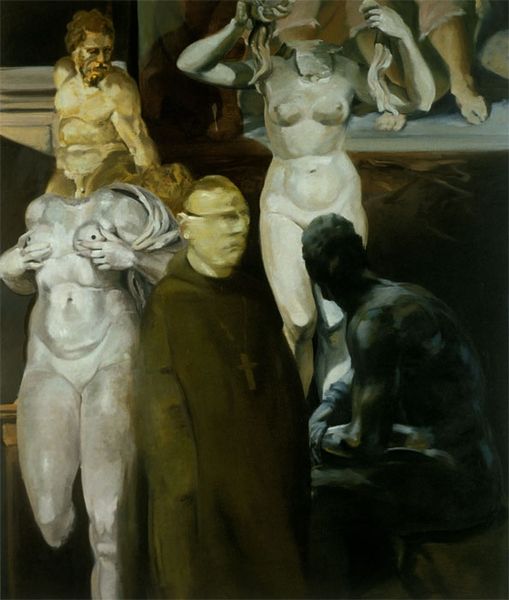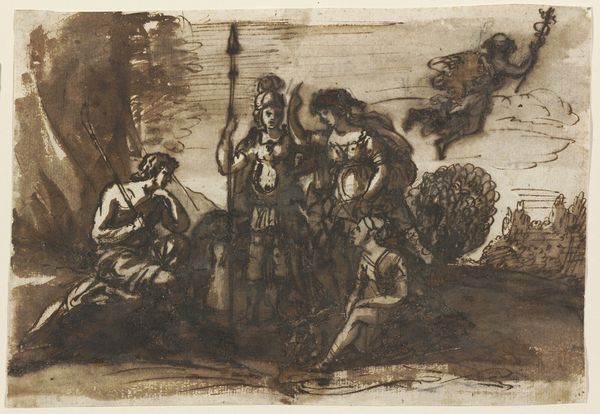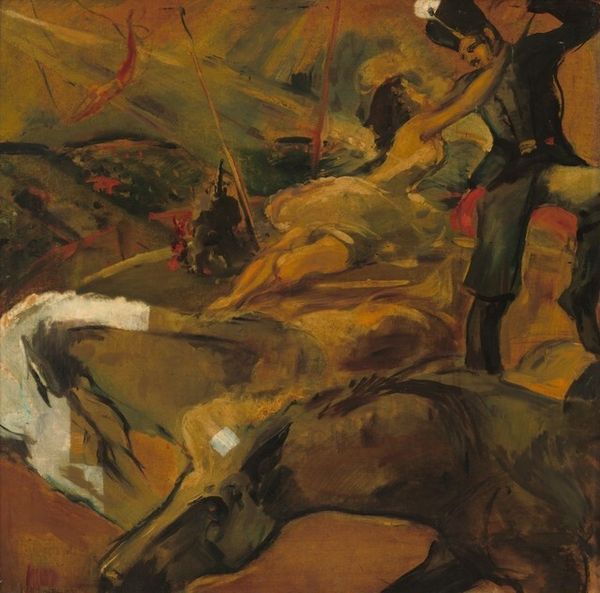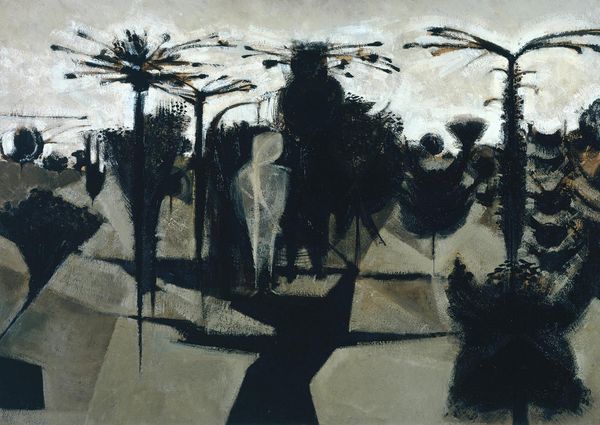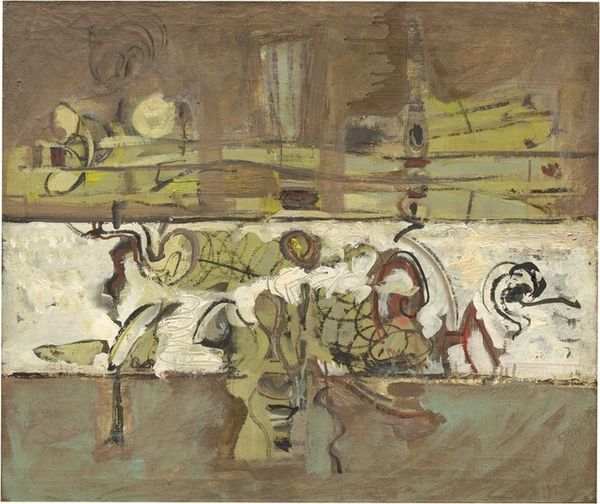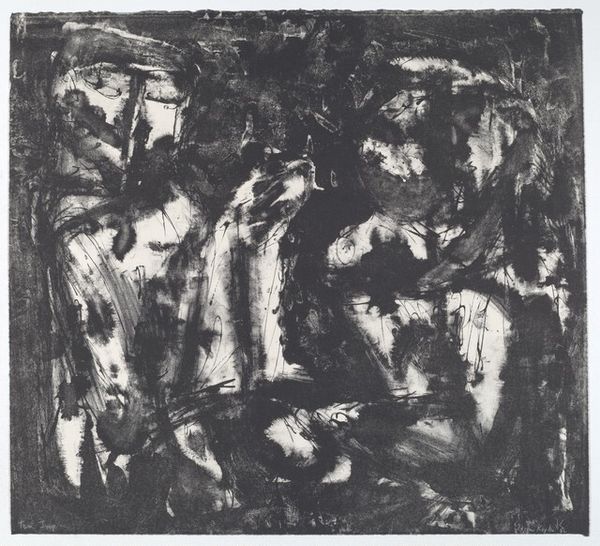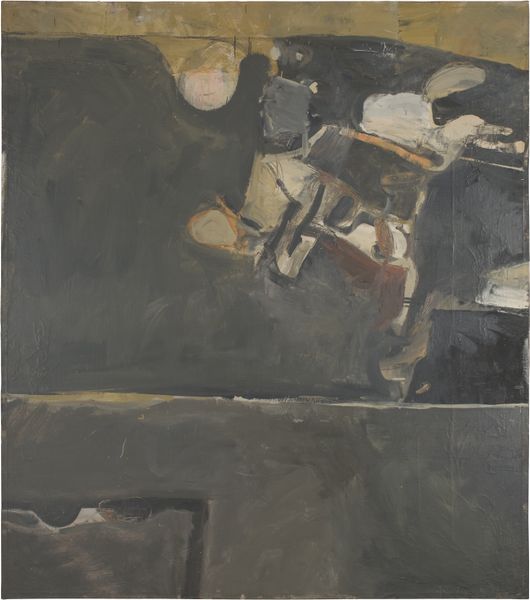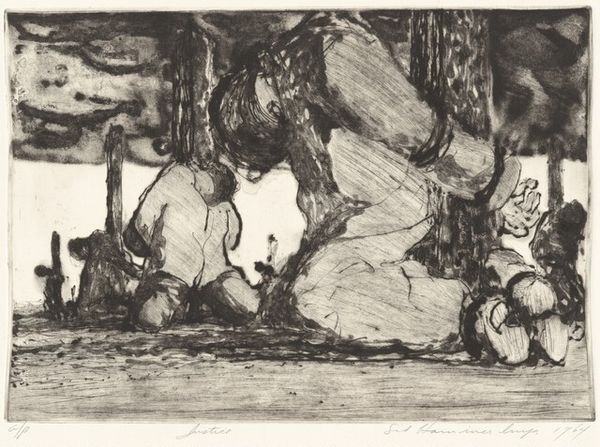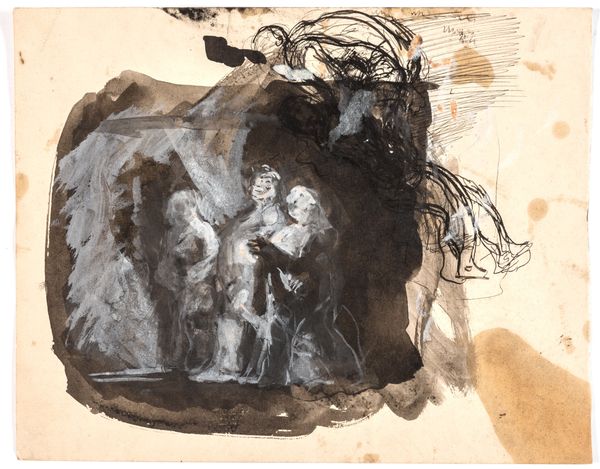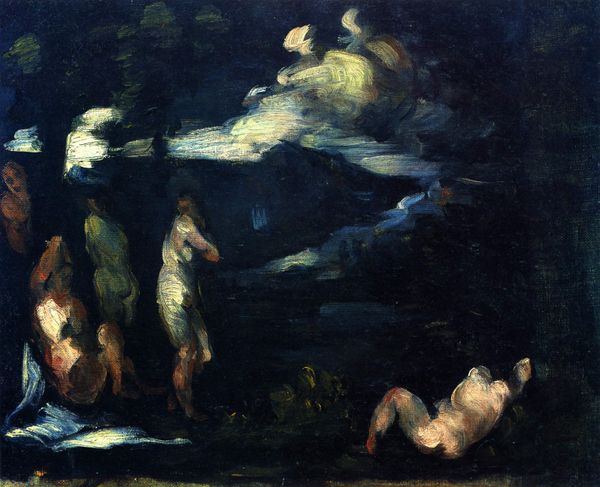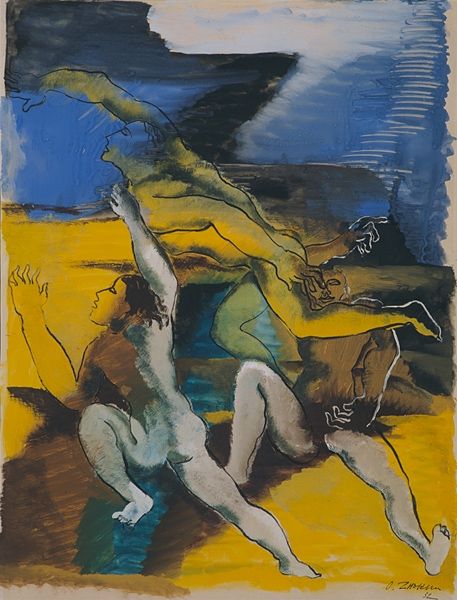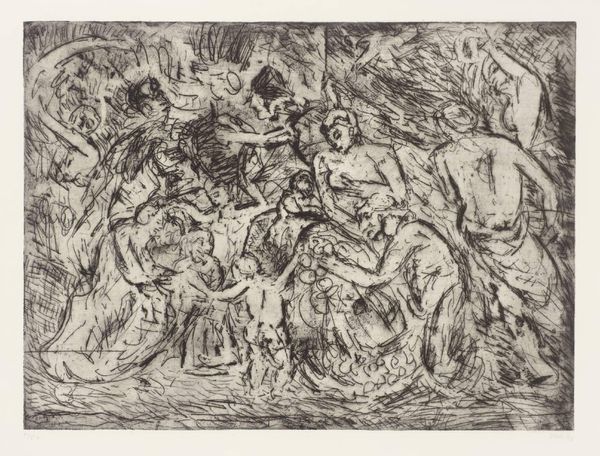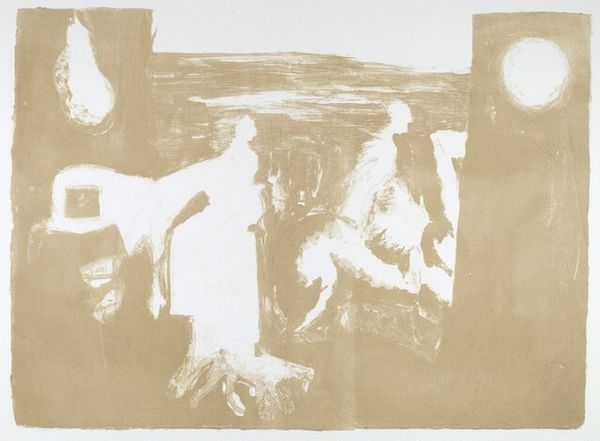
painting, oil-paint, impasto
#
painting
#
oil-paint
#
figuration
#
oil painting
#
impasto
#
group-portraits
#
surrealism
#
surrealist
#
surrealism
Dimensions: 200.5 cm (height) x 263.5 cm (width) x 4.5 cm (depth) (netto), 203.8 cm (height) x 265.3 cm (width) x 6 cm (depth) (brutto)
Vilhelm Lundstrom made this painting titled 'Luncheon on the Grass' with oil on canvas, but it’s not dated. The marks here are laid down with confidence, a kind of rapid-fire application that embraces the accidental. The impasto surface, built up with thick layers of paint, gives the scene a sculptural, almost tactile presence. Look at the figure on the right: the way the light catches on those loaded brushstrokes makes the form almost jump out at you! You can almost feel the weight of the paint, the hand of the artist moving across the canvas, building up the forms from blocks of pure color. It makes me think of Munch in some ways, that sense of unease and the bold handling of paint, a kind of expressionist sensibility, like art is this ongoing conversation, an exchange of ideas across time. It is after all, in the end, a celebration of ambiguity and the multitude of possible interpretations.
Comments
statensmuseumforkunst almost 2 years ago
⋮
Greed can also be life-affirming. Especially when it concerns joyously lustful desire. A naked female figure, voluptuous in every sense of the word, reclines in a landscape. Her head raised, she looks out towards the spectator and twoseated, fully dressed men. They are having a picnic. In front of the woman her breasts rest like two independent orbs staring out at the spectator. Undoubtedly the scene is also intended to be humorous, but it would seem that Lundstrøm had a personal penchant for curvaceous women. The artist Axel Salto tells us so: "Grotesque harridans with gargantuan, jutting hair pieces, with bulging stomachs and tiny legs, a nightmare to the eyes of any lover of women. Lundstrøm found them delightful." The painting hails from Lundstrøm's so-called "curly" period from 1919 to 1923. Infused with a not entirely straight claim to Expressionism, the works have a dual nature that deliberately pokes fun of the personal brushwork of Expressionism.
Join the conversation
Join millions of artists and users on Artera today and experience the ultimate creative platform.

